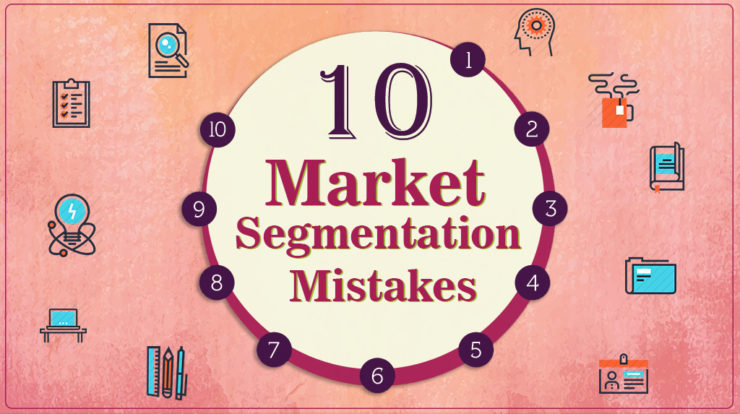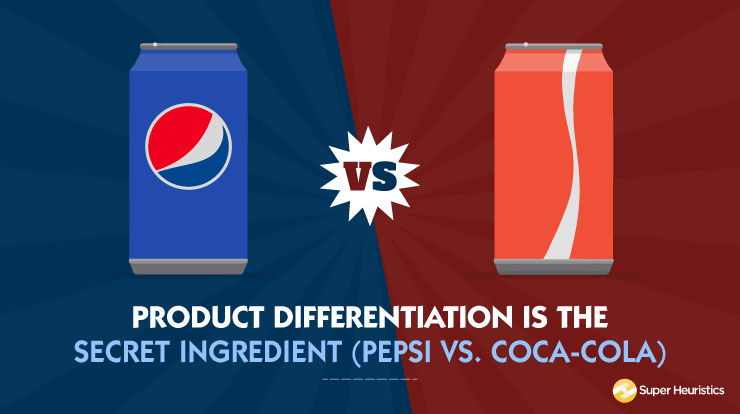
Samsung, a South Korean Multinational, which is synonyms with smartphones, consumer electronics, has a diversified business portfolio. You and I are here to discuss the Ansoff Matrix of Samsung.
But how would you react if I told you that Samsung started as a small trading company selling groceries and noodles?
Surprised, right? Here is something that you might not have known. Samsung has a diversified product and service portfolio which operated under the Samsung Brand, which I will explain using the Ansoff Matrix of Samsung.
Samsung’s product portfolio includes apparel, automotive, solid state drives, telecommunications equipment, chemicals, consumer electronics, electronic equipment, medical equipment, home appliances, semiconductors and electronic components.
Samsung’s service portfolio includes advertising, construction, hospitality, entertainment, financial services, medical and healthcare services, information and communications technologies, shipbuilding and retail.
You must be wondering; how did Samsung turn into a diversified multinational business from its humble beginnings as a small grocery trading business?
Let me explain Samsung’s meteoric growth using the Ansoff Matrix of Samsung.
What is the Ansoff Matrix?
Ansoff Matrix also referred to as the Product/Expansion Grid, is a strategic tool which is utilized by businesses towards analyzing and planning their growth strategies.
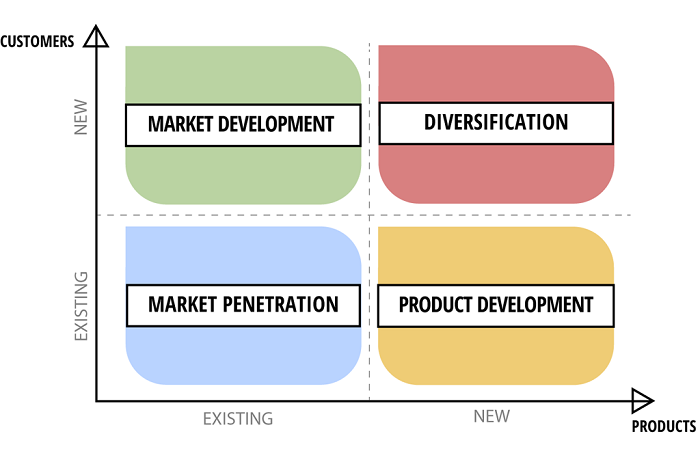
Source: http://www.elma-bpm.com
This matrix offers firms 4 different growth strategies which can be adopted by the business post analysis of risk involved in every strategy.
The four strategies offered by the Ansoff Matrix are as follows:
Market Penetration
This strategy focuses on acquiring a larger market share by increasing the sales of its existing products in its existing market.
Businesses can adopt strategies of competitive pricing or aggressive marketing to achieve its market penetration goals
Product Development
This strategy focuses on developing new products and services to serve its existing consumer base and market. This strategy includes improving existing products and services, developing new variants or products etc.
Market Development
This strategy focuses on entering new markets with existing products or services. The business can enter other markets using the direct export strategy, licensing, franchising, foreign direct investment etc.
Diversification
This strategy focuses on entering newer markets by introducing new products to these markers.
Having explained what the Ansoff Matrix is, let me show you how Ansoff Matrix of Samsung led to its stupendous growth.
#GrowthGoals -The Samsung Ansoff Matrix
So, coming back to our main question, how did Samsung grow into a diversified multinational business from a grocery trader in Su-dong, South Korea?
The answer is simple, using the growth strategies of the Ansoff Matrix of Samsung
Having utilized every approach mentioned in the Samsung Ansoff Matrix, Samsung has become one of the most valuable and most recognized brands in the world.
Samsung plays it smart and analyses its internal strengths and weaknesses, its external business environment to explore growth opportunities and accordingly opts for the most suitable growth strategy derived from the Ansoff Matrix of Samsung.
Samsung’s Market Penetration
Samsung seeks to grow with its existing products in every market the company operates. While market penetration seems to be the least risky of all growth strategies as it allows Samsung to leverage its existing capabilities and resources.
Samsung opts for market penetration to increase its market share.
In growing markets, Samsung launches its market penetration strategy to increase its existing market share. The company can adopt aggressive marketing and promotions, offer competitive pricing etc. to eat into its competitors market share.
For instance, Samsung drops the prices of its smartphones a few months before the launch of its next model. In fact, an Idealo report analyzed the Samsung phone prices in the UK. And here's exactly what it looks like.
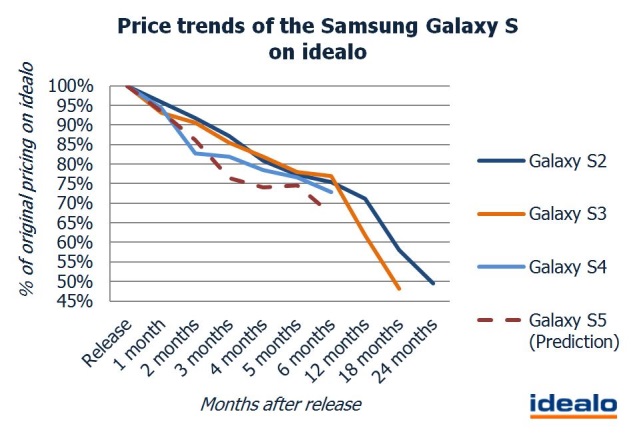
This allows Samsung to acquires new customers, increase its market share and at the same time clear its old stock prior to the launch of its latest product line.
However, the market penetration strategy has its limitations as once a market approaches a point of saturation, the growth halts and Samsung will require to alter its growth strategies and opt for other growth strategies within the Ansoff Matrix of Samsung to continue its growth.
Samsung’s Market Development
Samsung started as a small business based out in Su-dong, South Korea and today is a global brand present in over 180 countries. This can be attributed to the market development strategy from the Samsung Ansoff Matrix.
For instance, find below the timeline of Samsung’s market development and international expansion.
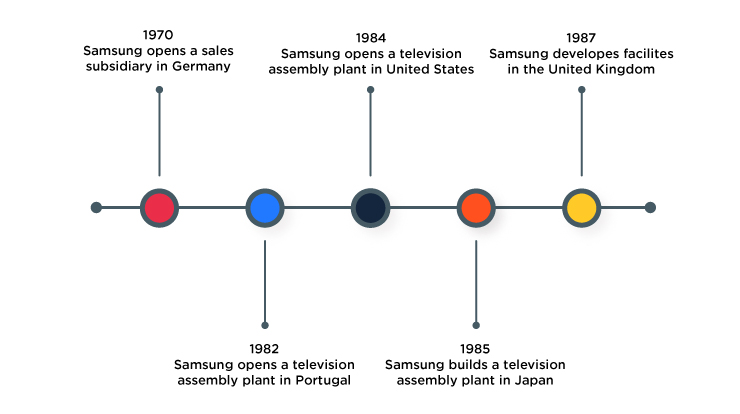
- 1970 - Samsung opens a sales subsidiary in Germany,
- 1982 – Samsung opens a television assembly plant in Portugal.
- 1984 - Samsung opens a television assembly plant in the United States.
- 1985 – Samsung builds a television assembly plant in Japan.
- 1987 – Samsung develops facilities in the United Kingdom
The market development strategy involves Samsung targeting its existing products and services into newer market segments or geographical regions.
Samsung has used and still uses a combination of different approaches to enter new markets, which include direct export, licensing, joint-venture, mergers and acquisitions and direct foreign investment.
The market development strategy has allowed Samsung to have a global presence and once Samsung develops brand recognition and brand loyalty within a market, it is easier for Samsung to introduce its subsequent products and services under its brand.
Samsung’s Product Development
Samsung’s product development strategy has played a vital role in making Samsung a diversified global brand. Samsung develops new products which target its existing market segments and regions.
Samsung uses a combination of enhancing its existing products to completely launching a new product under its brand name.
For instance, Samsung is a dominant name in the smartphone industry. Samsung has developed different smartphones, for different market segments, and launches these new products in its existing markets.

Samsung's first four of the Note Series Phones
Samsung has the Galaxy M-Series for its low-income consumers, Galaxy A-series phones for its middle-class consumers, Galaxy S-series phone for its upper-middle-class consumers and the Galaxy Note-series for its higher-income consumers.
As a result of this Samsung can enjoy a higher market share within the smartphone market in most of the markets it operates.
Also Read: GE Matrix for Product Portfolio Analysis
Samsung’s Diversification
The extensive product portfolio of Samsung which includes apparels, automotive, solid state drives, telecommunications equipment, chemicals, consumer electronics, electronic equipment, medical equipment, home appliances, semiconductors and electronic components speaks volumes about Samsung’s diversification strategy.
Historically, Samsung has diversified into different businesses upon spotting an opportunity with growth potential in different regions in the world.
Due to Samsung’s diversification strategy, Samsung has an extensive product and service portfolio under the Samsung brand operating all over the globe.
Conclusion
Samsung has utilized every growth strategy, which is mentioned in the Ansoff Matrix of Samsung to its advantage to grow from a small grocery trading business in a small town in South Korea to become one of the largest brands in the world.
Samsung has diligent in analyzing its strengths and weakness along with the external business environment before selecting and deploying the growth strategies of the Ansoff Matrix of Samsung.

